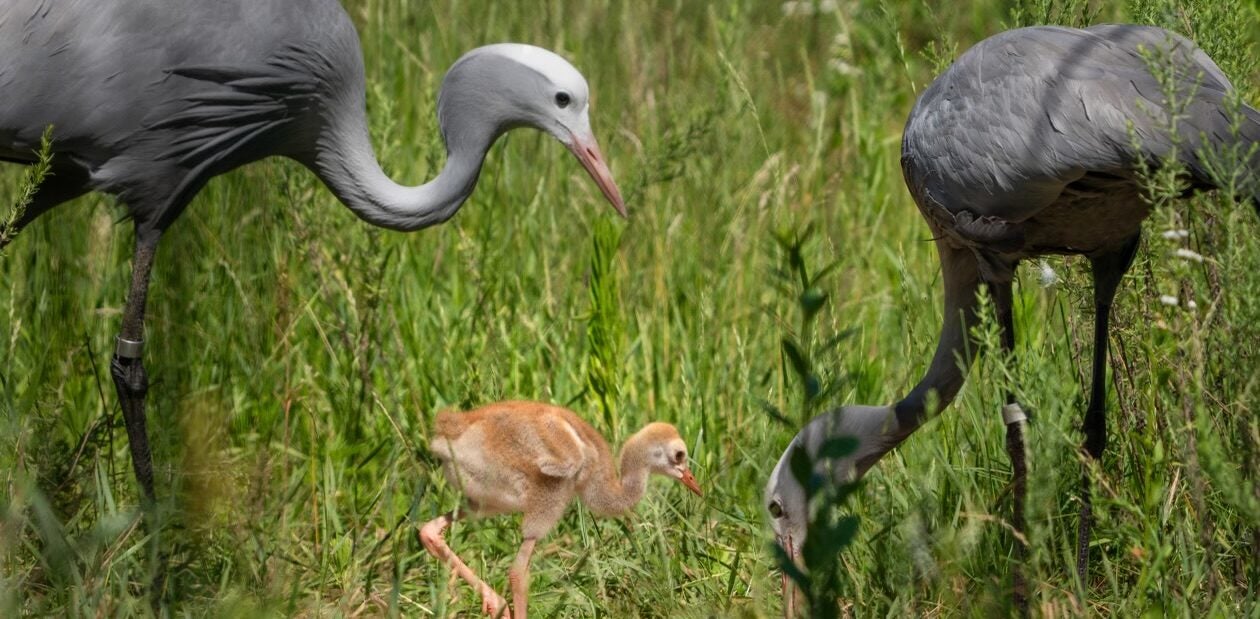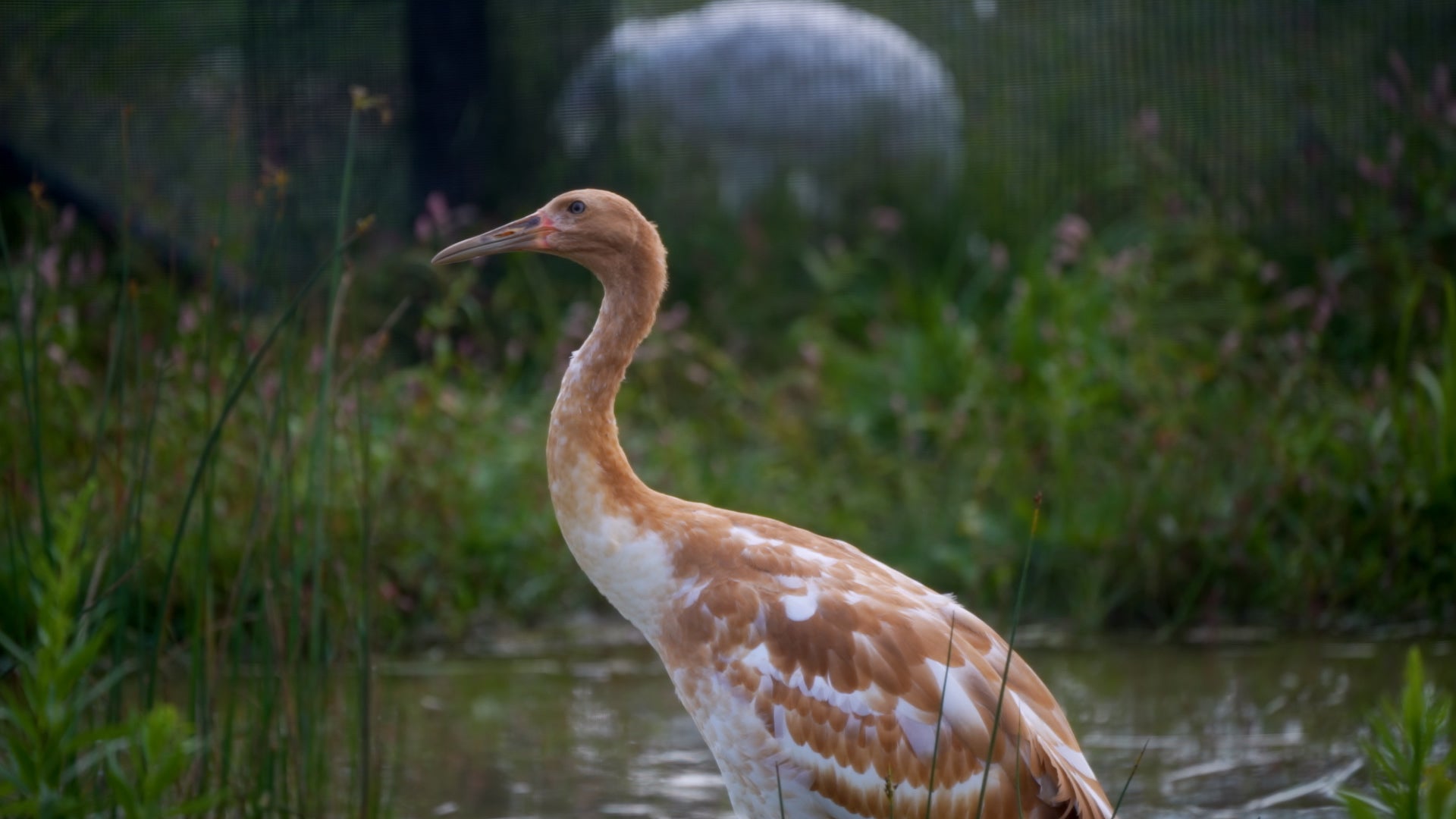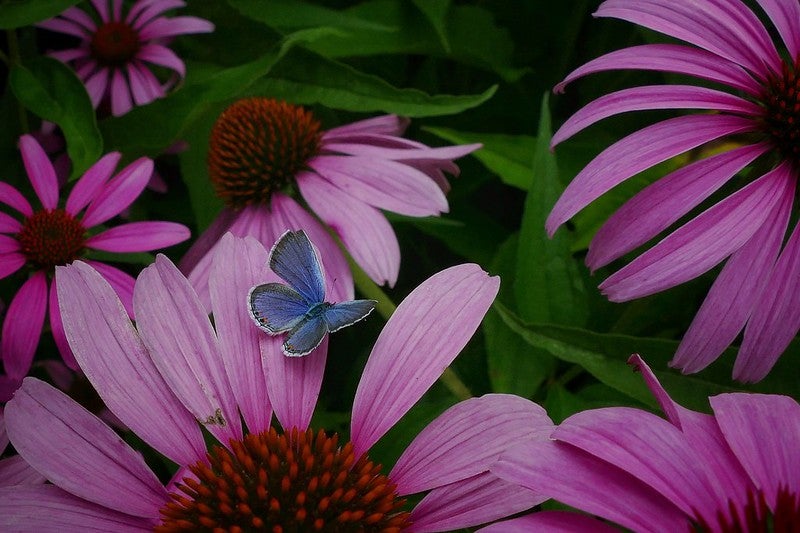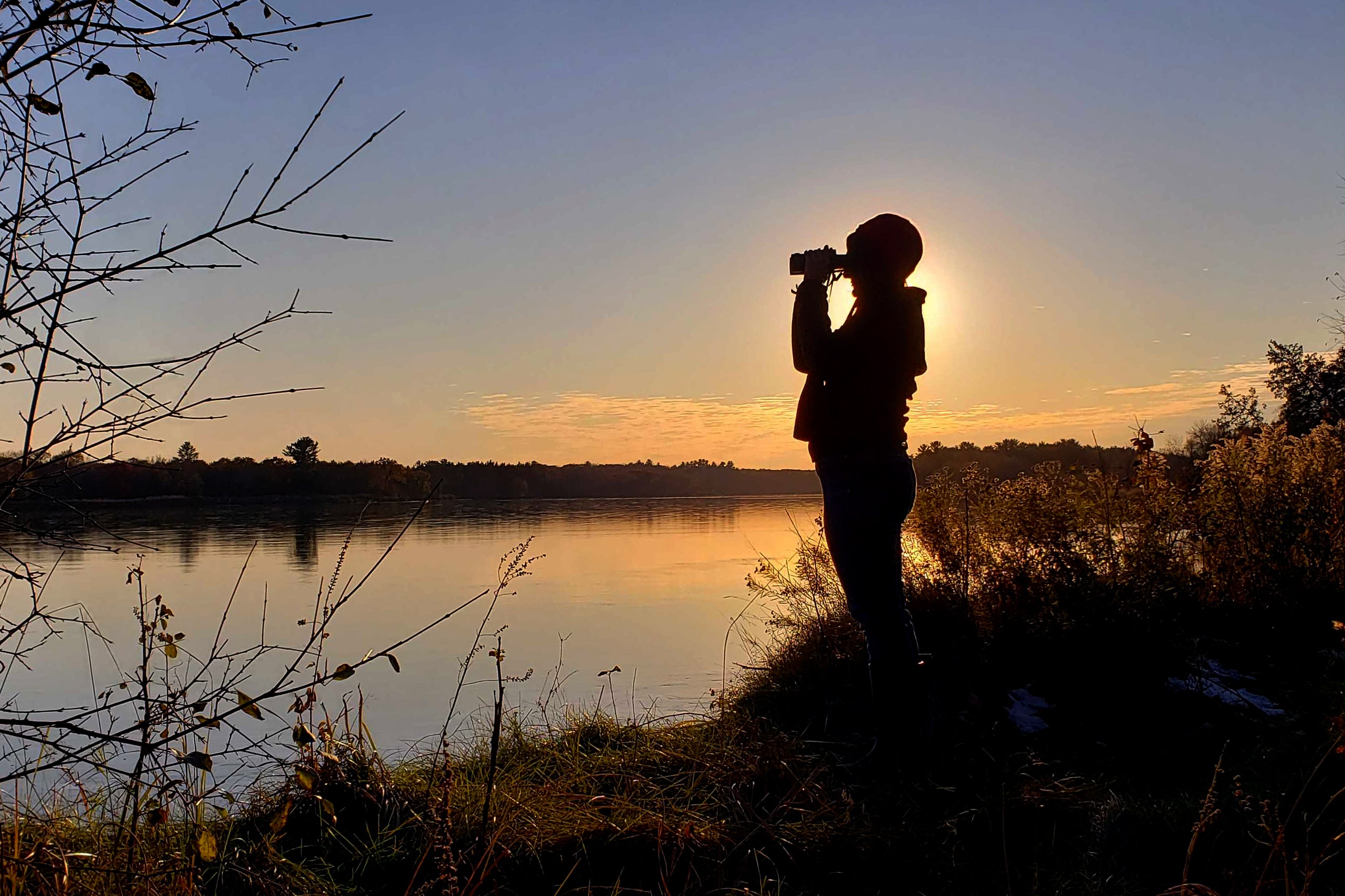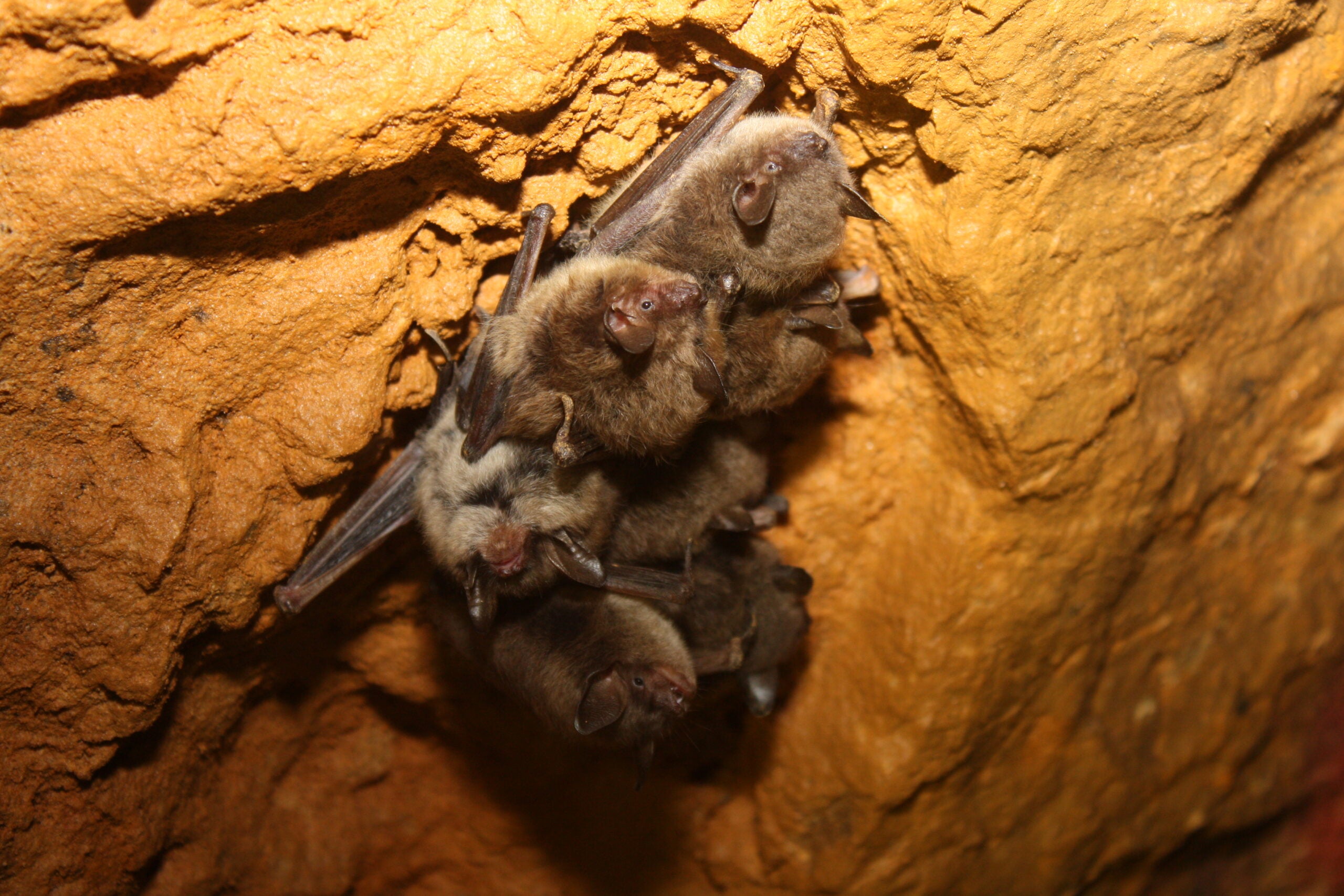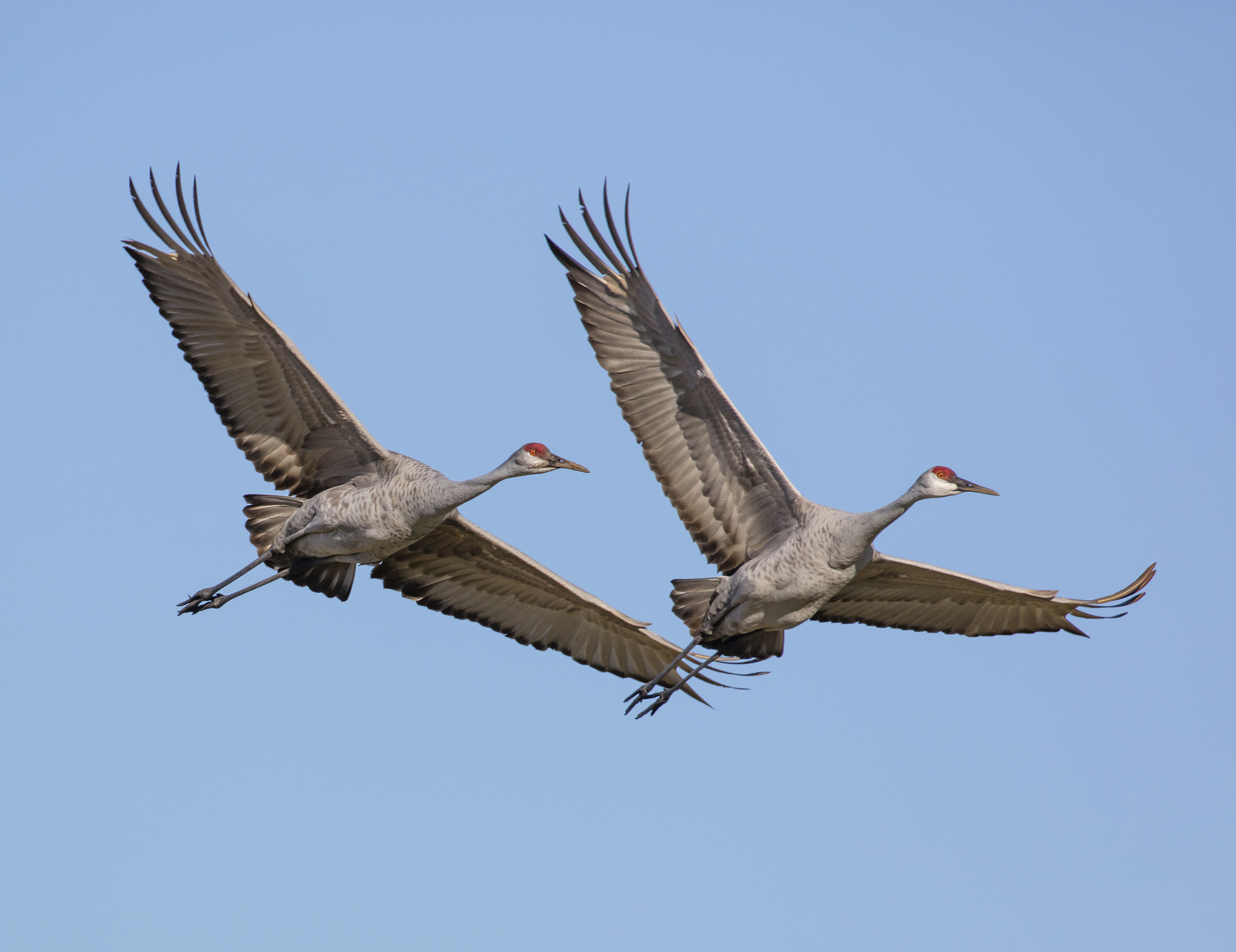For almost a month at the International Crane Foundation in Baraboo, three cranes of two different species are living together to make one family.
Calypso, a sandhill crane, is being raised by Periwinkle and Harold, two blue cranes. The day Calypso hatched, Periwinkle sat on her to keep her warm. The next morning, Harold was catching bugs and feeding the chick.
Since then, they’ve been getting along wonderfully, said Cyndie Gitter, assistant curator of birds at the ICF.
News with a little more humanity
WPR’s “Wisconsin Today” newsletter keeps you connected to the state you love without feeling overwhelmed. No paywall. No agenda. No corporate filter.
“They’re very protective of their chick, and take care of her in that way. And then also, just feeding and making sure that she’s learning what she needs to do to grow up and be healthy and strong,” Gitter said.
By watching her parents, Calypso is learning how to swim in the pond, forage for food and defend against predators.
Often, when animals are enlisted to foster another species, it’s in the hope of saving an orphaned baby. In this case, the International Crane Foundation is using cross-fostering to help two blue cranes struggling with infertility prepare for parenthood.
Periwinkle and Harold live in captivity at the foundation. Shortly before Calpyso hatched, her egg was used to replace an infertile egg being tended by the pair.
The ICF is focused on maintaining the blue crane population. The species is considered vulnerable by the International Union for Conservation of Nature. There are estimated to be fewer than 30,000 blue cranes in the wild and their population is decreasing. Gitter said there are only approximately 30 blue cranes in North America.
“Their status in the wild is vulnerable. They do face a lot of different threats, especially with human development and sort of conflicts with agricultural lands,” Gitter said.
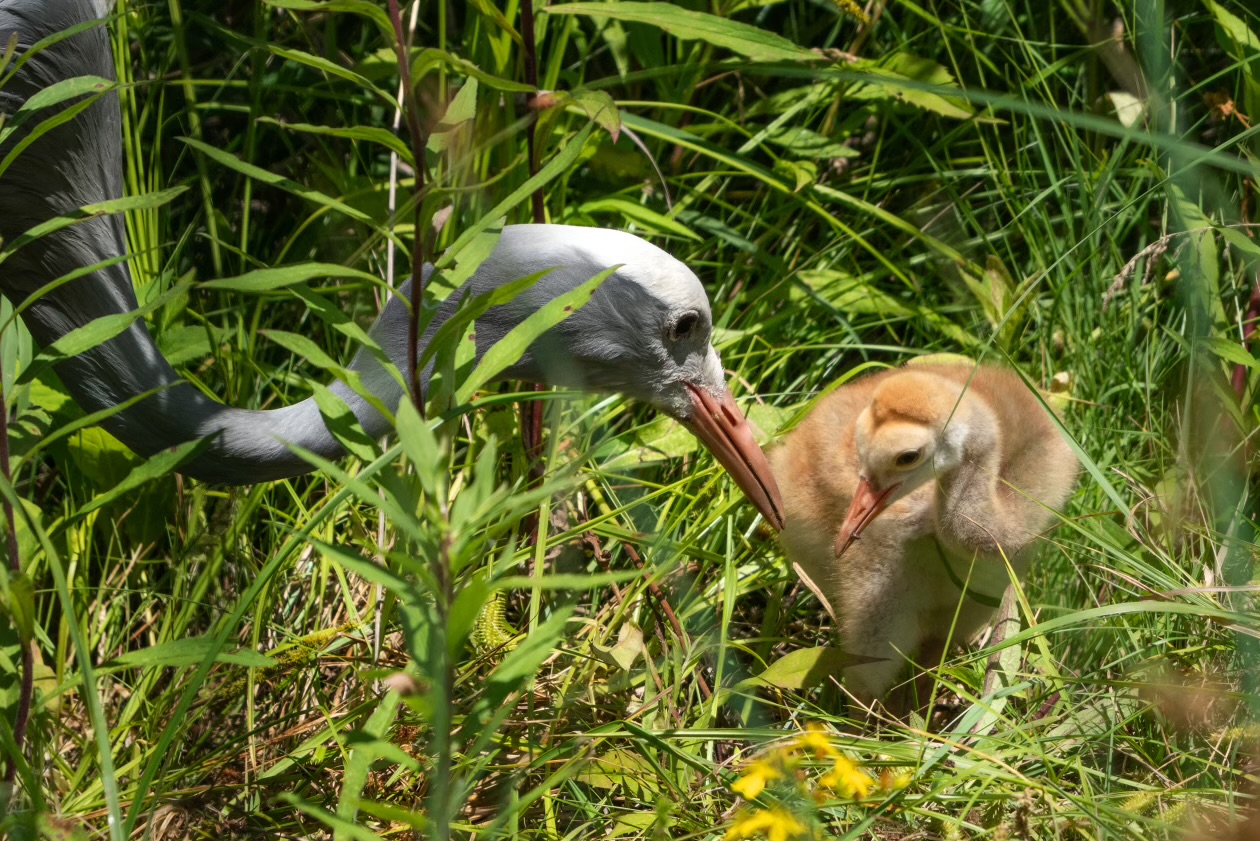
Anna Pidgeon, an avian ecologist at the University of Wisconsin-Madison, said cross-fostering is used in many different ways among domestic and wild species. In this case, a common species chick — a sandhill crane — is raised by a vulnerable species — blue cranes — to help them gain parenting skills.
“Figuring out how to work as a pair, as coparents, is something that just like in humans or other species where it takes two, they get better with time and with practice,” Pidgeon said.
Gitter is hoping Periwinkle and Harold will correct some of their reproductive behaviors and eventually lay a successful hatch.
“Now that they have raised the chick, they’re going to be more invested to raise a chick again,” Gitter said.
Pidgeon said in some cases cross-fostering can pose problems for young.
“Each species has its own unique set of ways of using the environment, whether it’s behavior or specific plants or other foods. And so it can result in problems for the youngster,” Pidgeon said.
Gitter said Calypso won’t be at a disadvantage because the chick will not be released to the wild. The ICF said it’s top priority is to ensure the health and safety of its cranes, including the new family unit.
The ICF is using the trio as an opportunity to learn more about how cross-fostering works. Gitter said she is watching closely to see how being raised by a different species will shape Calypso.
“She definitely has some innate sandhill behaviors, but how much of the blue crane vocalizations or blue crane behavior (is) she picking up?” Gitter said.
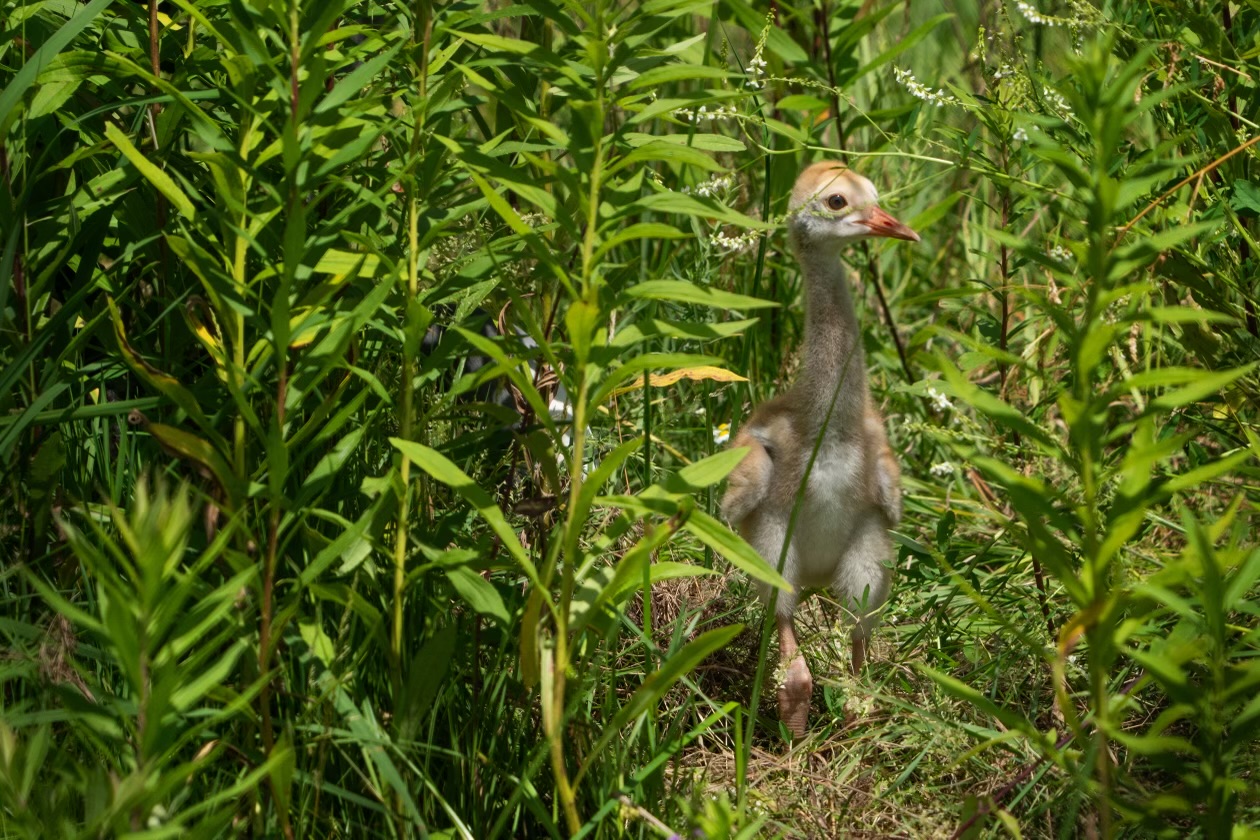
In the coming months, it will be time for Calypso to spread her wings and separate from her parents. Once she learns to fly, Periwinkle and Harold will be empty nesters.
“She will be placed right next door to an adult sandhill that can be a role model for her, can be a companion for her,” Gitter said.
It will give Calypso a chance to reconnect with her own species. Gitter said she’ll be interested to see if Calypso will be young enough to learn more from the sandhill mentor.
The ICF hasn’t had a chick for the public to see in a number of years. Gitter said when people see Calypso, it’s a pleasant surprise.
“I’ve really just enjoyed watching Periwinkle and Harold just sort of grow and have these opportunities to rear chicks. They’re so invested in their chick,” Gitter said. “Calypso is thriving.
Wisconsin Public Radio, © Copyright 2025, Board of Regents of the University of Wisconsin System and Wisconsin Educational Communications Board.

